Many animal breeds are okay with giant size. Today, we explore the giant breeds of our four-legged buddies and spotlight the biggest dog breeds. But before you fall head over heels for these colossal canines, you should know that they need extra attention, considering their growth, living area, upkeep costs, and the necessary training to be friendly and well-behaved.
Ready to explore the 12 largest dog breeds and tips to be prepared for when considering one as a pet? Here we go.
1. Saint Bernard
Saint Bernards, famous for their Swiss Alps rescue dog portrayal, is on top of the list of large breeds. They are fully grown, weigh 140 to 180 pounds, and stand about 27 to 30 inches tall. Their friendly, gentle nature makes them perfect for families, but remember that their size means they’ll need plenty of room to move around.
On the downside, these giants can eat a lot and might have health issues like hip problems, leading to significant vet bills. Training Saint Bernard breed can be tricky, as they’re smart and love to please but can sometimes be stubborn, so you need to be consistent.
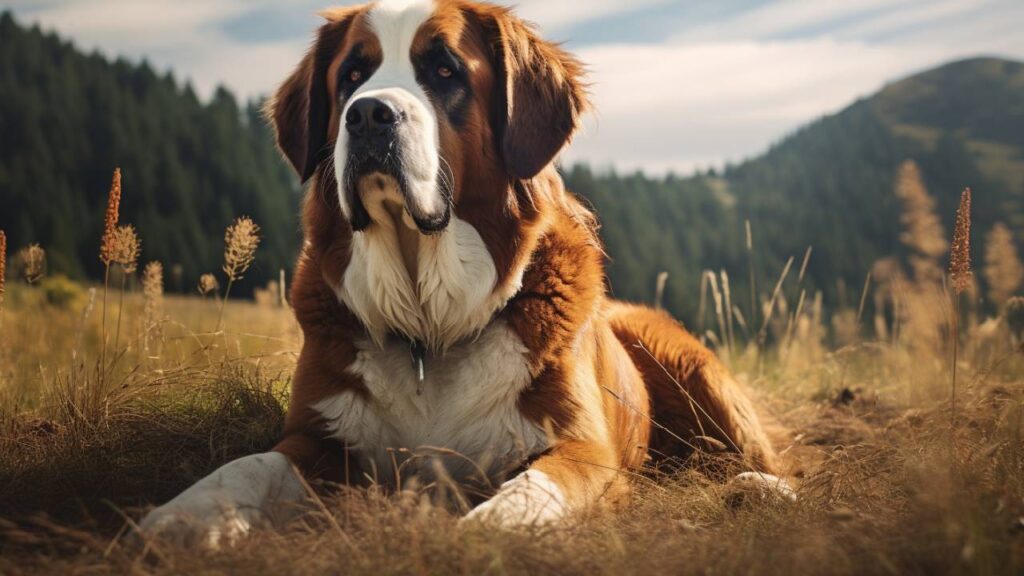
2. Great Dane
Great Danes may look scary due to their size, but they’re known as gentle giants. They are incredibly tall dogs, some even standing as high as 32 inches, and can weigh up to 175 pounds. Despite their size, they’re friendly and reliable buddies.
However, having a Great Dane breed means higher food bills, bigger dog beds, and potentially heftier vet costs. Training them can be challenging due to their independent streak, but they’ll learn quickly with patience and consistency. Also, they don’t fully grow until they’re two or three years old, so be prepared for a playful, giant puppy.
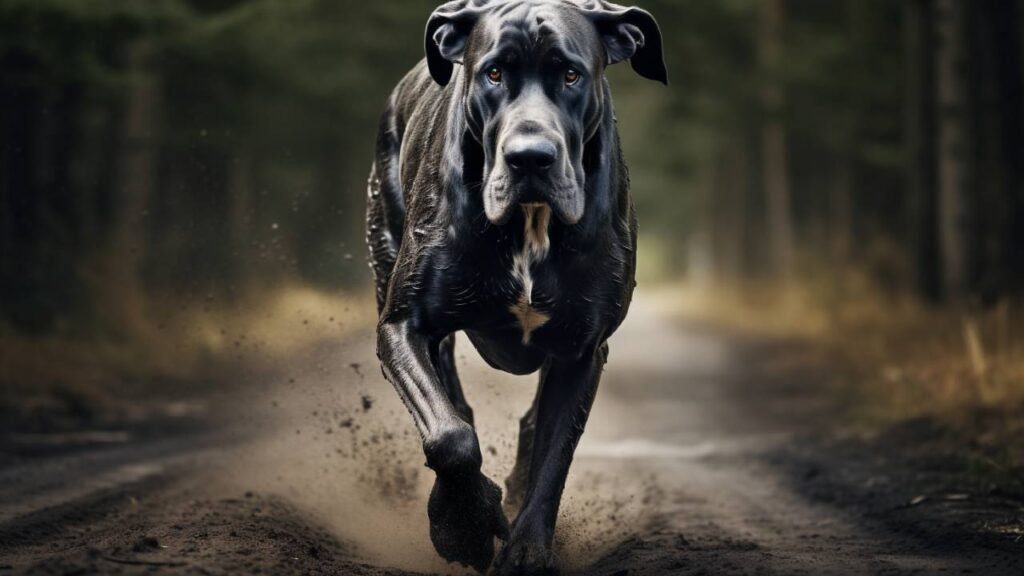
3. English Mastiff
English Mastiffs, often just called Mastiffs, are some of the heaviest dogs out there, typically weighing between 120 and 230 pounds. Despite their intimidating size, they’re gentle, loving dogs that also make excellent watchdogs.
Yet, be prepared for the costs. Their large appetite and possible health issues, like heart conditions and joint problems, might require deep pockets. Remember that Mastiff breeds also need lots of space and patience in training due to their size and slightly stubborn nature.
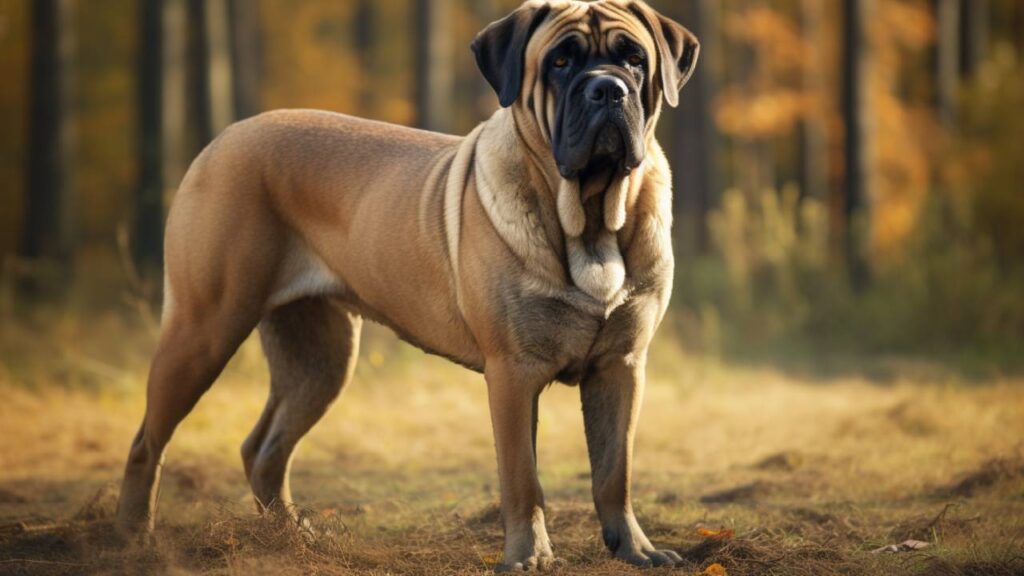
4. Newfoundland
Newfoundlands, or “Newfies,” are known for their amazing swimming skills and protective instincts. These gentle giants usually weigh between 100 and 150 pounds and stand 26 to 28 inches tall. Due to their patient and loving temperament, they’re perfect for families.
However, owning a Newfoundland breed can be costly, as it requires lots of food and may cause health issues like hip problems and heart conditions. They also need lots of space and consistent, positive training, as they can be somewhat sensitive.
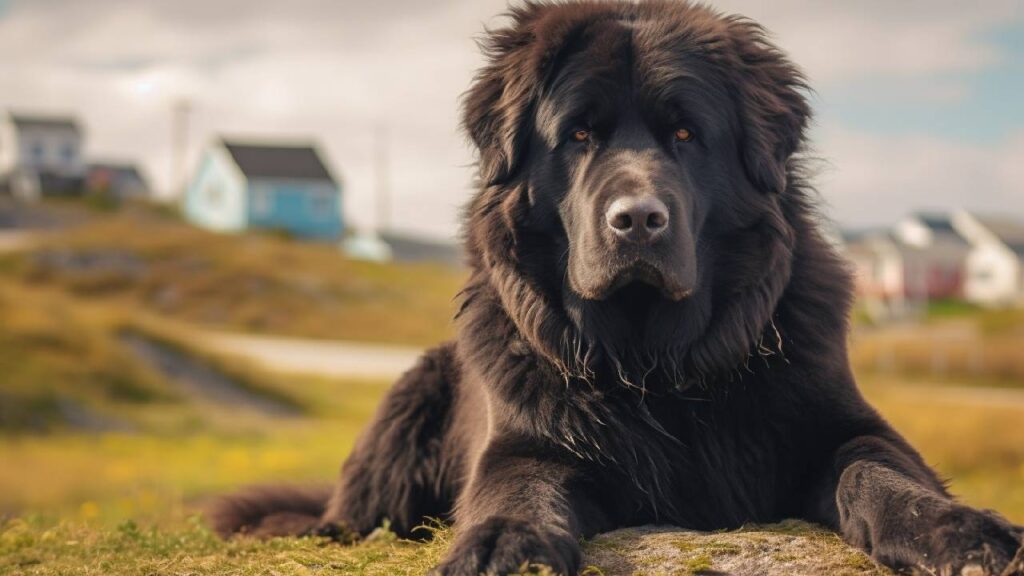
5. Leonberger
Leonbergers are named after the German city of Leonberg and can weigh between 90 and 170 pounds. These dogs are known for being friendly and playful, making them ideal family pets.
However, they can be quite costly to maintain due to their dietary needs and possible health issues, like hip problems and some types of cancer. Leonberger breed needs plenty of indoor and outdoor space and is relatively easy to train, thanks to their intelligence and eagerness to learn.
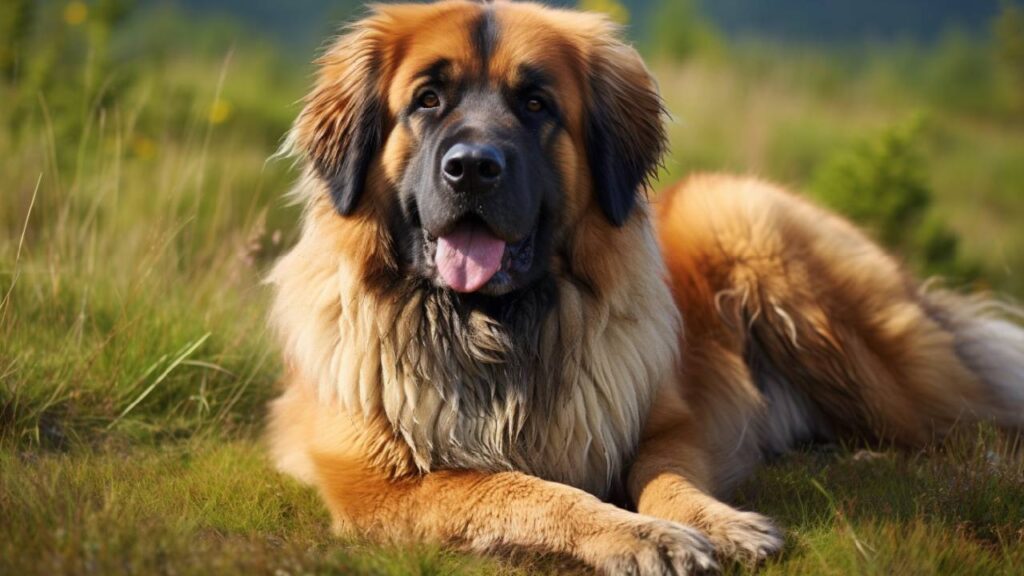
6. Irish Wolfhound
Irish Wolfhound breed is among the world’s tallest dogs, standing at least 32 inches tall and weighing between 105 and 120 pounds. Despite their size, they’re calm and friendly.
Their large size means high food and healthcare costs, as they’re prone to health issues like heart disease and bone cancer. They need plenty of room to move around, and as for training, they’re smart and respond well to consistent, positive reinforcement methods.

7. Anatolian Shepherd
The Anatolian Shepherd, native to Turkey, was bred for harsh climates and to guard livestock. They usually weigh between 80 and 150 pounds and are known for their intelligence and protective nature.
Given their size and the potential for health problems like hip issues, Anatolian Shepherds are not cheap to keep and need lots of space. Training an Anatolian Shepherd breed can be challenging due to their independent nature, but they make excellent companions with firm, consistent training.

8. Neapolitan Mastiff
The Neapolitan Mastiff breed, dating back to ancient Rome, is known for its distinctive wrinkled face and protective nature. These dogs weigh between 110 and 150 pounds and stand 24 to 31 inches tall. Despite their tough looks, they’re loyal, calm, and gentle with their families.
However, they can be expensive to keep due to their food requirements and the potential for health problems like joint issues and heart disease. They need a lot of space and can be quite inactive indoors. Early socialization and consistent training are key to managing their protective nature.
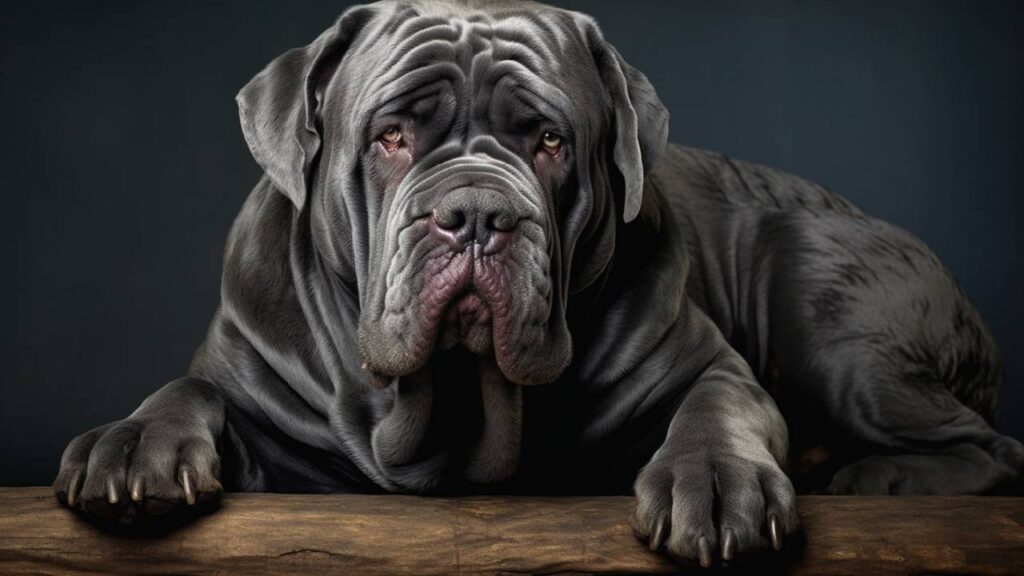
9. Bernese Mountain Dog
Bernese Mountain Dogs are known for their tricolor coat and friendly nature. They usually weigh between 70 and 115 pounds and stand 23 to 27.5 inches tall. They’re great with families and other pets.
However, they can be expensive to keep due to potential health problems like hip and elbow problems and certain types of cancer. Due to their size and love of play, they also need lots of space. Training a Bernese Mountain breed is usually fun, as they are eager to please and respond well to consistent, positive reinforcement methods.
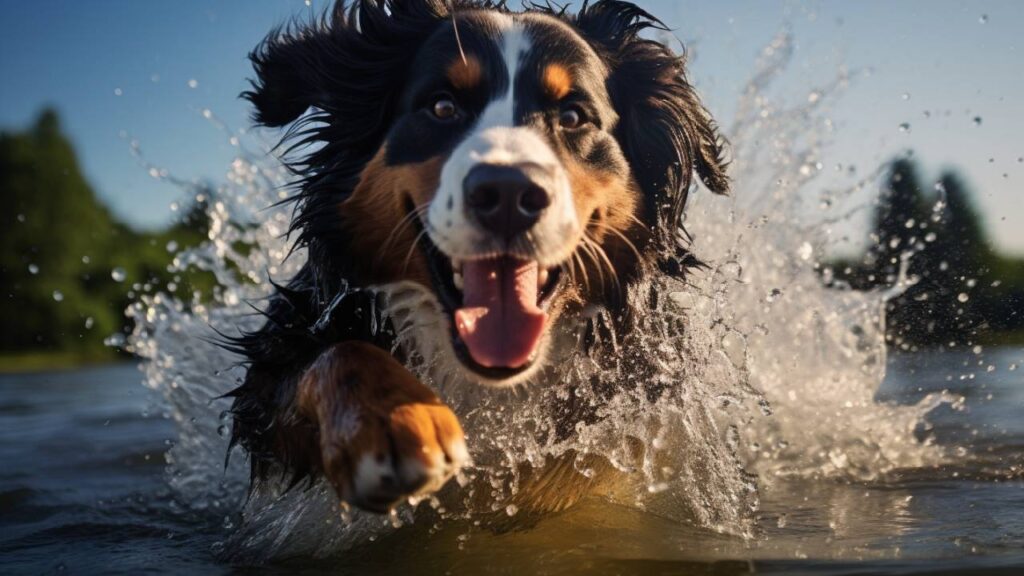
10. Scottish Deerhound
The Scottish Deerhound is one of the tallest sighthounds, standing 28 to 32 inches tall and weighing between 75 and 110 pounds. They have a noble look and gentle nature.
However, owning a Scottish Deerhound breed can be costly due to its food needs and potential health problems, including heart disease and bloat. They need lots of space, ideally a large, fenced yard where they can run. Deerhounds are intelligent and can learn quickly with positive, consistent training.

11. Cane Corso
Cane Corsos are muscular, athletic dogs from Italy known for being protective. They typically stand 23.5 to 27.5 inches tall and weigh between 90 and 120 pounds. They’re loyal and great protectors but can be cautious around strangers.
Owning a Cane Corso dog breed can be expensive due to its food needs and potential health problems, such as hip issues and stomach conditions. They also need lots of exercise and room to move around. However, they are intelligent dogs that respond well to positive, firm, and consistent training.
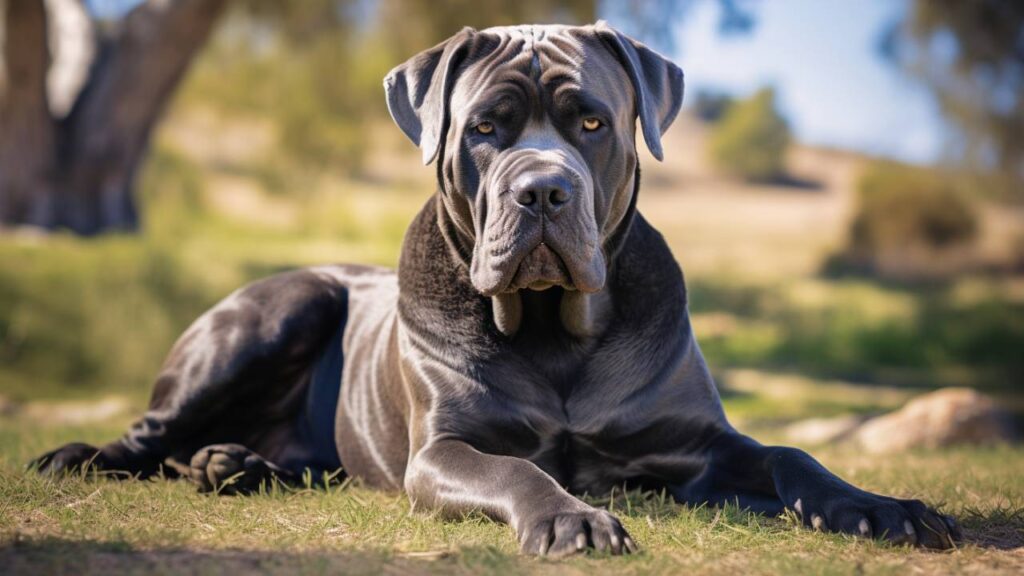
12. Rottweiler
The Rottweiler breed is a sturdy and robust dog known for its distinct black and rust coat. It usually weighs between 80 and 135 pounds and stands 22 to 27 inches tall. It’s protective and brave, making great guard dogs, and affectionate and loyal to its families.
However, owning a Rottweiler can be pricey. Besides needing lots of food, they might have health problems like hip issues, eye diseases, and certain types of cancer, leading to significant vet bills. They also need plenty of space for exercise. Regarding training, Rottweilers are smart and love to work, making them relatively easy to train. But remember, due to their protective nature, they need early and extensive socialization.
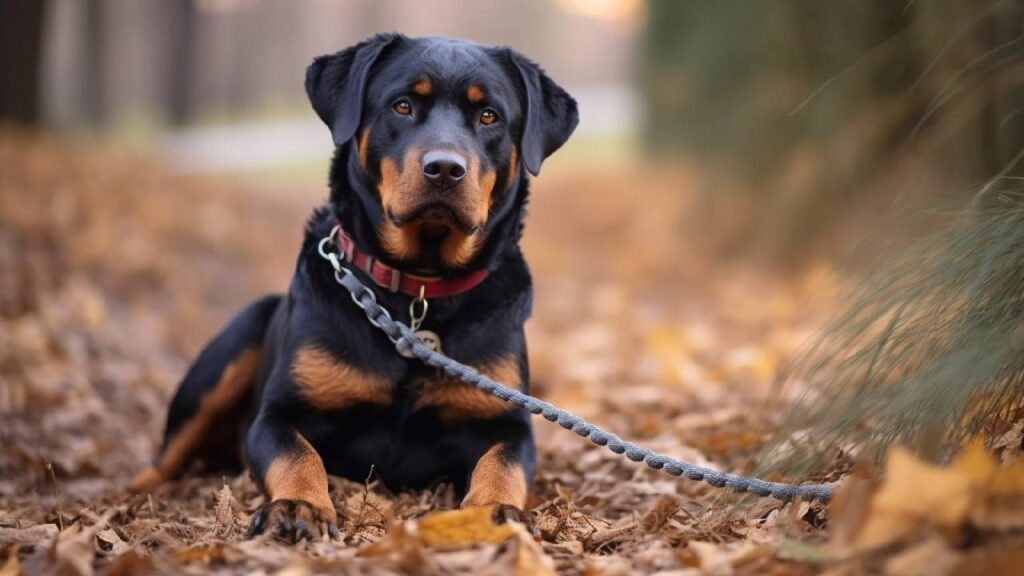
Important to Know About Large Dogs
Different dog breeds grow and mature at their own pace. The largest dog breeds typically take longer to grow up compared to the little ones. For example, a small Chihuahua breed could be fully grown by six to nine months, but a large breed like a Mastiff or Great Dane might not stop growing until they’re 18 months to two years old.
During this longer growth phase, these big dogs need extra attention to ensure they grow healthy. If they grow too quickly, puppies of large breeds can run into health problems, like hip or joint problems. They’ll need the right food designed for their breed and regular visits to the vet to keep an eye on their health and growth.
Here are some more tips to consider before adopting a large dog breed. Understanding these factors allows you to create a loving and healthy environment for these gentle giants:
- Space requirements: Large dogs need more space because of their size. They need enough room to move around comfortably, both indoors and outdoors. An indoor dog playpen, for example, can help manage their space indoors.
- Exercise needs: They generally require more exercise than smaller breeds to stay healthy and happy.
- Diet and nutrition: Feeding a large dog can be more costly due to their larger dietary requirements.
- Training and socialization: Due to their size, training is essential to managing their behavior. Socialization from a young age can help prevent aggression and fearfulness. A review of the best shock collar for large dogs can help you decide which one best suits your needs.
- Health concerns: Large dogs often have shorter lifespans than small breeds and can be prone to specific health issues, such as hip dysplasia, bloat, and heart conditions. To manage these potential costs, get great dog insurance.
- Cost of care: Beyond food, veterinary care can be more expensive for large breeds, particularly because they may require larger doses of medications, specialized surgeries, or treatments for breed-specific issues.
- Travel considerations: Traveling with a large dog requires more planning, as not all accommodations or transport options may be pet-friendly or equipped to handle larger breeds. Opting for a suitable heavy-duty dog crate can make travel safer and more comfortable for the pet and the owner.
If your dog is smaller, you can look in the way of portable dog playpens, a very convenient option for travelers.
However, people considering getting these breeds should understand their unique needs and challenges, from their longer growth period and the required space to the costs of their care and the importance of their training. Having one of the largest dog breeds can be a great experience. They often have big, loving hearts that match their size.
FAQs
How do I ensure my large breed dog’s healthy growth?
Provide a balanced diet tailored to their breed, regular vet check-ups, and controlled exercise to avoid potential health issues during their longer growth phase.
Are there space-saving alternatives for large dog breeds in apartments?
While apartments can be challenging, consider nearby dog parks or daycare options for ample exercise, and invest in interactive toys to keep your large dog mentally stimulated indoors.
How can I handle the stubbornness of some large dog breeds during training?
Positive reinforcement and patience are key; try using high-value treats and breaking training into short sessions to keep them engaged. Professional trainers can also be invaluable.
Can large breeds be good with kids and small pets?
Yes, but early socialization is crucial. Supervised interactions and teaching kids proper handling will foster a harmonious relationship between large dogs, children, and small pets.
How can I create a dog-friendly living space for my large breed?
Utilize sturdy furniture, designated play areas, and pet-friendly flooring to accommodate your large dog’s size and ensure a comfortable living environment for you and your furry companion.
Can I train my large dog to be a therapy or service dog?
Absolutely! With proper training and certification, large breeds can excel in therapy or service roles. Seek guidance from professional trainers experienced in this field.


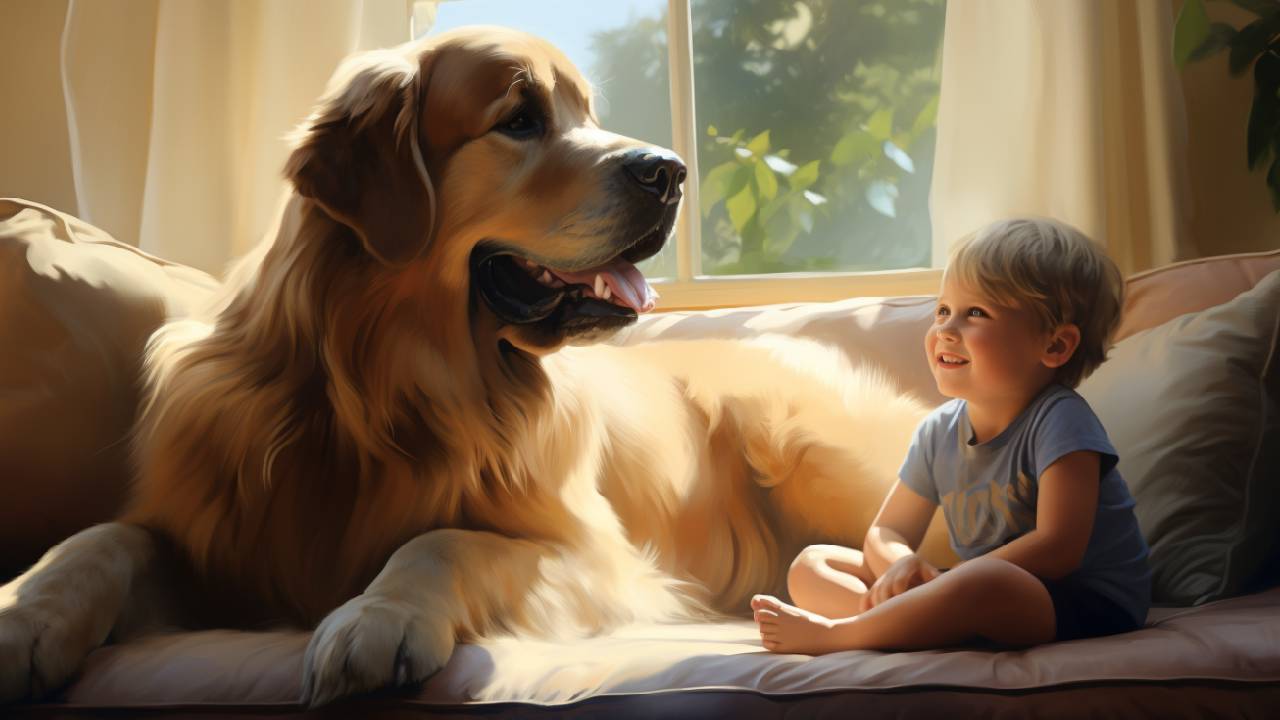

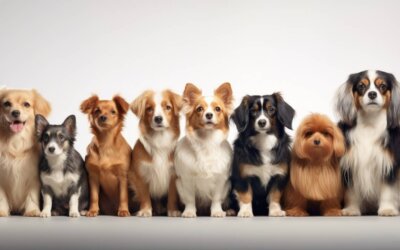

Always fascinated by big dogs! I have a Saint Bernard and he’s the gentlest giant…
Great rundown on big breeds! I have a Mastiff, anyone else have a large breed they adore?